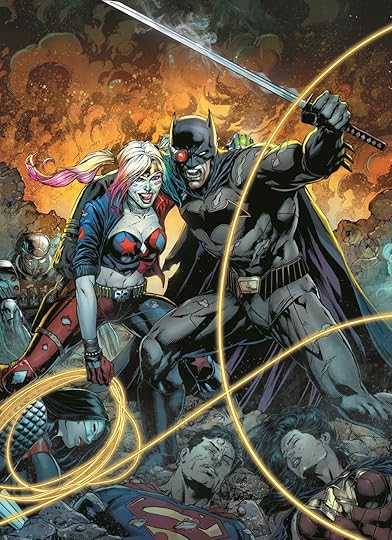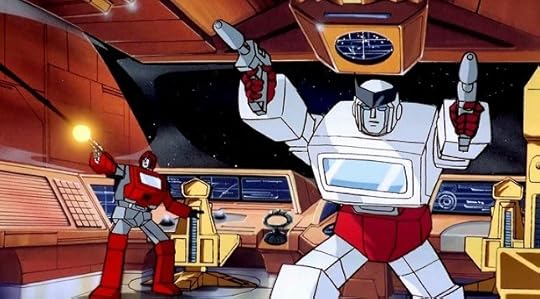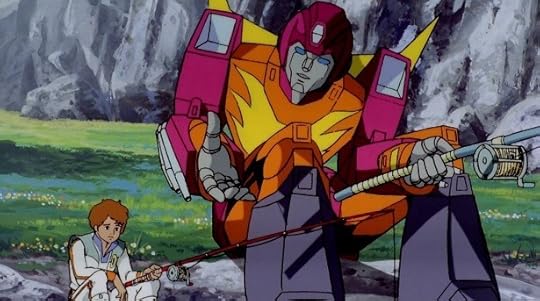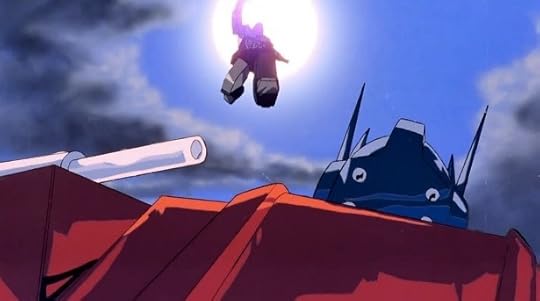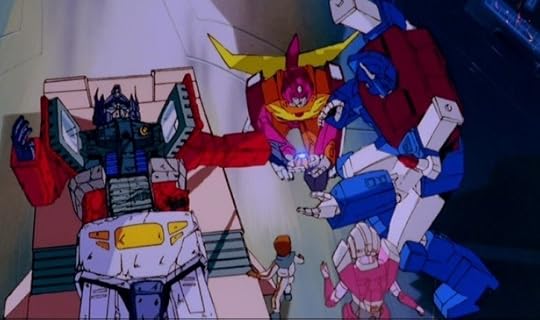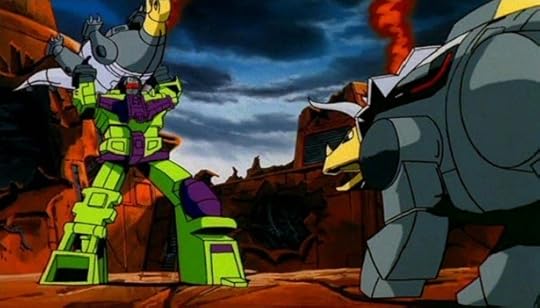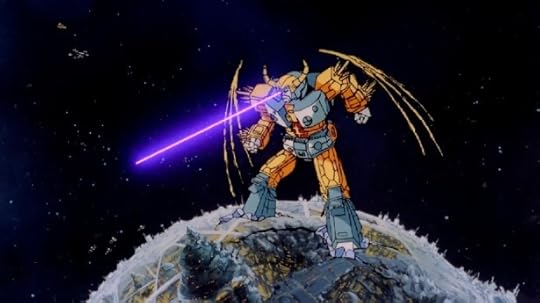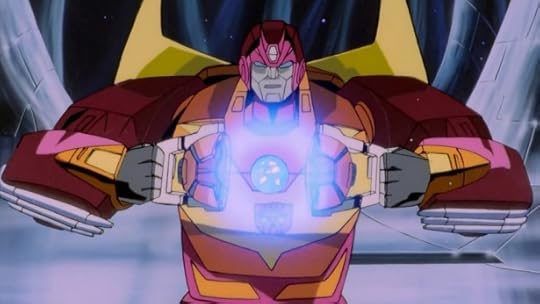Chris Hardwick's Blog, page 2332
September 1, 2016
The JUSTICE LEAGUE Will Face the SUICIDE SQUAD This December
It’s been teased that the Justice League and the Suicide Squad may eventually cross paths on the big screen. But DC isn’t going to make fans wait too long to see that confrontation play out… It’s happening later this year in the six-issue Justice League vs. Suicide Squad miniseries.
Prior to the New 52 reboot, the Justice League and the Suicide Squad were aware of each other, but the Justice League vs. Suicide Squad story will be the first confrontation between the two factions in over five years. Along with the announcement, DC released an intriguing piece of artwork for the mini that features members of both teams down for the count while Harley Quinn and Batman stand side-by-side wielding Green Lantern’s ring, Wonder Woman’s lasso, Deadshot’s eyepiece, and Katana’s sword!
According to DC, “another deadly strike team is lurking in the shadows, one that could expose dark secrets throughout the DC Universe, with ties to the hidden truths of Rebirth.” The announcement also noted that “longtime enemies such as Batman and Deadshot, the Flash and Boomerang, and Wonder Woman and Harley Quinn will have to put aside their differences when an evil threat once thought lost to the DC Universe makes their return.”
The Justice League vs. Suicide Squad storyline will begin in December with a prelude chapter in Suicide Squad #8. Joshua Williamson is writing the weekly miniseries, which will feature artwork by Jason Fabok and Tony S. Daniel. Williamson will also be writing the Suicide Squad tie-in issues, while Tim Seeley will serve as the guest-writer of Justice League‘s tie-in issues.
Are you looking forward to seeing DC’s two high profile teams face each other? Pick a side in the comment section below!
DEATHSTROOOOOOOOKE!
Image: DC Comics
Jack White Drops Dynamic New Acoustic Track, “Carolina Drama”
Just weeks removed from Third Man Records playing the first record in (almost) space, Jack White is back at it again with the White jams. Damn Jackie!
A few weeks ago, White announced a forthcoming acoustic double LP titled Jack White’s Acoustic Recordings, 1998 – 2016. He shared “City Lights,” a previously unreleased White Stripes song, in conjunction with the announcement, and today he gave us a second taste from the album, this time revisiting a track from one of his other great bands, The Raconteurs.
“Carolina Drama” originally appeared on Consolers of the Lonely, the Raconteurs’ second and final (so far) record. White’s acoustic version gives the song a southern flavor: Cheeky fiddle lines. Multiple guitar tenors. It’s dynamic as hell, mixing moments of honeyed laze with that earnest Jack White vocal pluck. And, just like the folk songs of the early 20th century, White’s tale is eerie and melodramatic, a testament to his unrivaled understanding of textural balance, emotional tension, and historical context.
Jack White’s Acoustic Recordings, 1998 – 2016 arrives on September 9 via Third Man Records/Columbia Records and it can be pre-ordered here. And, as Rolling Stone reports, White will make his debut solo acoustic TV appearance that same night on The Tonight Show. Check out the new track and let us know how you feel about it in the comments. Full tracklist below:
Jack White’s Acoustic Recordings, 1998 – 2016 tracklist:
SIDE A
1. “Sugar Never Tasted So Good”
2. “Apple Blossom” (Remixed)
3. “I’m Bound To Pack It Up” (Remixed)
4. “Hotel Yorba”
5. “We’re Going To Be Friends”
6. “You’ve Got Her In Your Pocket”
7. “Well It’s True That We Love One Another”
8. “Never Far Away”
SIDE B
9. “Forever For Her” (Is Over For Me)
10. “White Moon”
11. “As Ugly As I Seem”
12. “City Lights” (Previously Unreleased White Stripes Track)
13. “Honey, We Can’t Afford To Look This Cheap”
14. “Effect & Cause”
SIDE C
15. “Love Is The Truth” (Acoustic Mix)
16. “Top Yourself” (Bluegrass Version)
17. “Carolina Drama” (Acoustic Mix)
18. “Love Interruption”
19. “On And On And On”
20. “Machine Gun Silhouette” (Acoustic Mix)
SIDE D
21. “Blunderbuss”
22. “Hip (Eponymous) Poor Boy” (Alternate Mix)
23. “I Guess I Should Go To Sleep” (Alternate Mix)
24. “Just One Drink” (Acoustic Mix)
25. “Entitlement”
26. “Want And Able”
Image: Kris Krüg
The ROCK Channels INDIANA JONES in JUMANJI Concept Art
When it comes to its advertising budget, the Jumanji sequel is going to save a TON thanks to Dwayne “The Rock” Johnson’s Instagram account. Between announcing the start of filming and the casting of Karen Gillan, Rocky has been on a one-man marketing tear. It doesn’t look like he has any plans to slow down, as he recently released concept art revealing both the name and look of his character.
Jon Favreau Might Be Happy to Join SPIDER-MAN: HOMECOMING
If you like pleasant, rotund sidekicks in your superhero films, or if you get excited anytime the Marvel Cinematic Universe expands and makes sure to bring along lots of other characters you already know and love, we think you are going to be very happy about this news, because it looks like Jon Favreau will be joining Robert Downey Jr. in bringing the world of Iron Man in to the world of Spider-Man: Homecoming.
Variety is reporting that Favreau will return to his role as Happy Hogan, Tony Stark’s driver/assistant/friend, that he played in the all three Iron Man movies (Favreau also directed the first two). Sony gave no comment to our reaching out for confirmation, but it is worth noting that a quick trip over to the Spider-Man: Homecoming IMDb page does show Mr. Favreau listed in the cast as Happy Hogan as of right now.
The movie is currently filming in Atlanta, so if any of our readers that are in the neighborhood want to start keeping an eye out for Jon Favreau, let us know. (But if you do find him, don’t start telling him he’s “money and he doesn’t even know it.” That must have grown old a long time ago.)
Robert Downey Jr.’s appearance in the film has already been known for quite some time, so this news isn’t surprising, but it sure is exciting. Happy isn’t just good comic relief, he has also proven to be a competent and effective ally.
Though we have a feeling Spider-Man and his quick wit my throw him a little.
What do you think of this news? Tell us in the comments below.
All the Spider-Man: Homecoming rumors right here!
Image: Marvel
BLACK LIGHTNING Live-Action Series Coming to TV
For nearly 40 years, Black Lighting‘s profile has risen and fallen in the DC Universe. But now, Black Lightning may be getting his own television series from Greg Berlanti, one of the primary executive producers behind Arrow, The Flash, Supergirl, and DC’s Legends of Tomorrow.
According to Deadline, Berlanti is teaming up with The Game and Being Mary Jane creator Mara Brock Akil and her husband Salim Akil for Black Lightning, and this project has been in the works for a while. As originally conceived by Tony Isabella and Trevor Von Eeden in 1977, Black Lightning was Jefferson Pierce, a man who was born with the power to bend electricity to his will. Black Lightning became DC’s first black superhero to headline his own title, as he became inspired to bring take down the gang known as the 100, which was dominating the Southside of Metropolis. He went on to become a founding member of the Outsiders, and he later joined the Justice League as well.
Deadline’s report indicates that the TV series will pick up with Jefferson Pierce years after he retired his heroic identity. However, his daughter’s crusade for justice and the activities of a local gang force Pierce to once again become Black Lightning even though he is a wanted man in the eyes of the law. In the comics, Pierce had two daughters: Anissa and Jennifer, both of whom inherited similar powers of electricity from their father. Anissa and Jennifer went on to join the Outsiders and the Justice Society, respectively.
Since the New 52 reboot, Black Lightning has been very underused. However, a Black Lightning television series would probably change that if it goes forward.
Who do you think should play Black Lightning on TV? Embrace the thunder and share your dream picks in the comment section below!
Image: DC Comics
Blast Off with a New Galaxy-Style Nintendo 3DS XL
Before hosting a 3DS game-centered Nintendo Direct on Thursday, the Big N decided to reveal a brand new galaxy-themed New Nintendo 3DS XL. Best of all, it’s already available at most retailers right now. Prepare your body for the announcement tweet from Reggie Fils-Aimé below.
Out of this world! A New Galaxy Style New Nintendo #3DS XL is coming to stores starting this week for $199.99!https://t.co/v1K471XLBi
— Nintendo of America (@NintendoAmerica) August 29, 2016
I wonder if Neil deGrasse Tyson knows about this gem yet? The intergalactic look is definitely neat, but don’t confuse this as a new handheld. It’s the same fantastic New Nintendo 3DS XL–and a particularly eye-catching one at that. You’ll be sure to turn heads every time you take it out for a spin.
This space theme may also be a hint that Nintendo is going to announce a galactic-inspired game for the handheld during the upcoming Direct. Mario Galaxy was ported over to the Wii U not too long ago, so it would be nice to see the geame make the leap to handheld. The New Nintendo 3DS can easily handle Wii ports, ie. Xenoblade Chronicles and Hyrule Warriors, so anything is possible.
I’ll be skipping on this beauty, but only because I already have the Pokémon Red/Blue-themed New Nintendo 3DS that launched earlier this year. Otherwise, this would be mine already. Did you ever upgrade to a New Nintendo 3DS XL? Does the new galaxy style make you want to cop one? Let us know in the comments below!
Image: Nintendo
Audio Rewind: All The Reasons Mozart Was the World’s First Rock Star
Last week, Decca and Deutsche Grammophon announced a compendium of 15,000 minutes of Mozart delivered on an unprecedented 200 CDs. This is easily the largest box set of all-time. That sure seems excessive in our streaming age, especially for an outmoded collection that’s more suitable for my 87-year-old grandmother than anyone else. And, surely, the target demographic for this box set is music fans of a different era or devout music scholars, but its magnitude—and the fact that it’s going to exist at all—also speaks to Mozart’s enduring brilliance.
For most of us, 225 years after his death, the composer’s name has elevated into the vague firmament of classical music. We revere names like Mozart and Bach and Beethoven from afar, all in the same breath. A shared genius made indistinguishable over time. But each is great in his own regard, of course. And if you’re looking for someone relevant to our era, take a closer look at Mozart. He began touring at six. He wrote his first symphony at eight, his first opera at 11. Fans flocked from all over Europe to experience his inimitable musical talent. And more than 600 pieces later, he died at just 35, buried without wealth or stature in a common grave. The man lived hard and fast, blowing minds with his innovative musicality until he burned out, just like many of our most beloved 20th and 21st century musicians. Paving their way, some 200 years prior, was Wolfgang Amadeus Mozart, the world’s very first rock star.
In college, I decided to return to piano playing after many years. My professor gave me a short Mozart tune to get me back into the swing of things, and after a week of practice, I’d pretty much nailed it. Wow! A decade without playing and I’ve still got it, I thought. And a Mozart piece no less! I proudly displayed my renewed skills at my next lesson and learned that I had perfected what was Mozart’s very first composition, one he wrote when he was four. My pride is still recovering.
It’s a common tragedy with prodigies. Spend a lifetime cultivating a skill and then see it matched and bested by a child, one whose profound talent comes effortlessly and belies naiveté. In Amadeus, the Oscar-winning film from 1984, Mozart’s precocious skills are pitted against the jealousy of Antonio Salieri, a man who’s devoted his entire life to music and composition. For those of you that have seen Amadeus, it’s worth noting that, as is often the case, Hollywood embellished the truth. Mozart, reportedly, was not the giggling numskull depicted in the film, and this particular feud between Salieri and Mozart was probably fabricated. Still, there’s plenty of truth alongside its liberties, namely its portrayal of the composer’s rock star-esque lifestyle.
The man lived hard and fast, blowing minds with his innovative musicality until he burned out.
What are the qualities that we attribute to our rock star archetype? Prodigious. Provocative. Uncompromising in both artistry and behavior. Mozart was all of these things. As a child, his father, a minor composer and music teacher, taught him composition and toured him around Europe, which resulted in a number of important connections within the “scene.” All the while he was composing, assimilating styles and molding them into something that was new and his own. And he may not have been the bozo depicted in Amadeus, but he was still controversial. He was flamboyant, and he loved elegant clothing, billiards, and dancing—the 18th century equivalent to the debauchery that has become de rigueur for today’s rock stars.
He also loved scatalogical humor (aka the dude looooooved a good poop joke) in an age of particularly highbrow decorum. In a letter to his cousin (the original German version was in rhymed verse), he wrote:
“Well, I wish you good night
But first shit in your bed and make it burst.
Sleep soundly, my love
Into your mouth you’ll shove.”
And in regard to the music itself, Mozart was intransigent. He quarreled with aristocrats over the sanctity of his art. He left a court appointment in Salzburg because he wasn’t allowed to compose the music he wanted. He was ridiculed for writing too many notes, ornate passages that necessitated virtuosity—a forerunner to rock star bravado, perhaps, the ‘guitar solo’ mentality—but he kept all of his notes just the same. He turned down offers in Paris, too, despite being in debt and riddled with a slew of maladies that required medical attention. His ailments plagued him throughout his life, and some have wondered how he was even able to get out of bed—there’s an entire book devoted solely to his medical history.
But get out of bed he did, and he did so much more than that. Mozart’s tunes remain recognizable even today. Many of his passages have become engrained in our collective psyche, passed along folk-style from generation to generation, even if we never intentionally look for them. This one, for example. And this one. Some of our first memorable “riffs.”
And what’s more, like many of our cherished rock stars, the circumstances of Mozart’s death are muddy and mythologized. There really were rumors that Salieri poisoned him, but they’ve been largely debunked. Likely his death was some amalgam of his maladies; researchers have posited no less than 118 possible causes of death. Similar to the members of our 27 Club, this is a case in which we ascribe preternatural life to genius, one that cannot be broken by anything so innocuous as fever or influenza.
If Mozart were alive today, he’d have millions of Twitter followers, and a personal team of paparazzi.
Like Hendrix, Joplin, and Morrison, Mozart was the young, invincible music hero of yesteryear. A forebear of rock ‘n’ roll’s eccentricity and a pioneer of his own time. So monstrous was his talent that even Beethoven, 15 years his minor, spent much of his life in the man’s shadow—LVB traveled to Vienna in 1787 just to meet the man (it’s unclear whether that actually happened). And so natural was his brilliance that he, like no one had ever done, was able to seamlessly weave chromatic harmony into diatonic pieces, increasing the music’s emotional depth and giving future generations permission to use a larger harmonic vocabulary. Mozart’s innovations helped advance the baroque age into the classical period, defining the era as one typified by clarity and balance and beauty, three qualities we still attribute to good music. In 1785, Haydn, another figure from that vague firmament, told his father: “I tell you before God, and as an honest man, your son is the greatest composer known to me by person and repute, he has taste and what is more the greatest skill in composition.”
But even with all that skill, Mozart, like a genuine rock star, never “sold out” to became wealthy. If he were alive in the internet era, it’s easy to imagine that he’d have millions of Twitter followers, a personal team of paparazzi waiting to snapshot his genius, and all the wealth that accompanies those things. So, maybe 200 CDs seems gratuitous, but in this case it’s warranted. When you gift the box set to your grandma, take a seat and listen with her. The music may sound different, but don’t be fooled. This man was a rock star. The very first. And if you listen with an open ear, it’ll blow your mind.
Image: Public Domain
AXIOM’s Mark Waid Talks the Need for Dark Superheroes
Mark Waid writes some damn good superhero comic books. He has a healthy history in the industry, writing some of the genre’s biggest characters. There’s a clear affection in his work, he loves superheroes, what they stand for, and it shows. Of course, he also has written some of the darkest, most twisted takes on the god in tights process that include major deconstructions of what it means to be a superhero and the effect it has on society and humanity. His latest graphic novel from Legendary Comics, AXIOM, is one such deconstruction, a meditation on human nature, heroics, and violence. Recently we had a chance to talk with Mark Waid about AXIOM, modern takes on superheroes, and why human beings are such jerks.
“It’s a first contact story, in a way,” Waid says of AXIOM. “It’s the story of what happens when aliens turn on us and how we react as a people.” He pointed out that AXIOM deals very heavily with our current, fear driven society. “It feels like fear is the engine of society and has been since 9/11. The idea that we are so motivated by fear, not only in the (United) States, but worldwide–especially as somebody who grew up reading superheroes in the Jet Age and the Atomic Age, when it was about courage and facing your fears–it all really gets to me.” Waid notes that good decisions and clear thinking are generally not born out of fear, and that is the genesis of AXIOM.
AXIOM is a book about a superhero going mad and unleashing his fury on the world, but it’s also about how humans push boundaries, perhaps too far at times. It’s easy to sympathize with the character Axiom, because all he wanted to do at first was help. “I don’t think he’s the villain, per se. I wouldn’t call him the hero though,” Waid says. “A lot of what goes on in the book is our reaction to the character, what that brings out in him, and the consequences of that.”
Waid understands the fundamentals of superheroes. His work on titles like Daredevil and Superman is often pointed to as the way to tell a story about good, morally strong hero. There’s more to Waid than that, of course, and some of his best stuff is a darker, grimmer take on superheroes. “The Mark Waid who loves Superman and loves pure, unangsty superheroes is the eight year-old Mark Waid. I love that kid, and I’m not putting him down in any way, shape, or form, cause I think there’s a place in the world and among the readership for altruistic, very simple superheroes that harken to a simpler time. When your a kid, all the lessons you learn about being a superhero make sense.” Waid pointed out that the real world is much darker and that it’s okay for superheroes to reflect that. “Those darker points and twists appeal to a grownup Mark Waid, and I think there’s room for both of us in my office. But the guy who wrote AXIOM was very much looking at it from a grownup point of view.”
When it comes to the look and feel of AXIOM, Mark Waid knew that getting a superhero comic book artist was necessary. Ed Benes fit that bill perfectly and you would be hard pressed to find somebody who draws better superheroes. “That’s exactly why he was picked, because he is a superhero guy. That gave me the latitude to go off book about what to expect in a superhero comic book.” Waid noted that AXIOM could be viewed as horror story, of sorts, and that Benes helped balance things and keep readers expectations and mindset of superhero comics.
“When it comes to superhero-aspect of (AXIOM), it’s kinda cynical,” Waid says of the book. “The idea that the fan who grew up loving Axiom is the guy who has to take him down because he realizes that hero doesn’t have a place in this world is pretty cynical.” He noted that the graphic novel has lots of ideas and philosophies that he’d love to explore more. “I have other tales I can tell in this world, it really just depends on how well the book is accepted.”
Images: Legendary
Editor’s note: Nerdist Industries is a subsidiary of Legendary Digital Networks.
Benjamin Bailey writes for the Nerdist and can be found on Twitter talking about Godzilla, comic books, and hardcore music.
SUPER MARIO WORLD Is Celebrated in Amazing 80,000-Domino Display
Considering how much time I must have spent playing Super Mario World during what I retrospectively lament as my formative years, I can’t muster anything but admiration for the hours spent in the name of the above work of art, which we found over at Gizmodo. It isn’t only the craft that leaves me in awe, but the monk-like patience required to organize of tens of thousands of dominos in the likeness of different scenes of Super Mario World—one of the greatest titles to hit Super Nintendo, and video games altogether.
The 81,032-domino set by The Domino King careens fluidly through scenes from the SNES masterpiece. Present and accounted for are, of course, Mario—circa his 1990 incarnation—and valiant steed Yoshi, but also a number of varyingly consequential baddies that fans of Super Mario World will recall lovingly.
Included among the lot are more familiar faces like Koopa Troopa, Bullet Bill, Wiggler, Big Boo, and (the game’s anomalous iteration of) the Goomba, but also villains who haven’t enjoyed the same notoriety: Chargin’ Chuck (the football player who couldn’t be undone by mere jumps), Rex (the doofy dragon who required two konks on the head to defeat), Monty and Mega Mole (a pair whose primary association for me is that level where they somehow expected you to figure out that you needed to complete the main stage in under a certain amount of time in order to reach the finish line), and that reptilian jackass who used to start fires in your path from the safety of his nest atop rows of music boxes. He doesn’t even deserve the courtesy of a name Googling. Naturally, big bad Bowser is honored as well.
But it’s not only the characters of Super Mario World who earn an homage in this video; the game’s diversity of levels—from the grasslands of Yoshi’s Island and Donut Plains to the caverns of Vanilla Dome to the treacherous Valley of Bowser (forgive the dramatics, but I’m getting nostalgic here)—are impressively represented, each accompanied by the appropriate leitmotif.
If you’ve got five minutes to spare—and hey, if I had a childhood to waste and The Domino King had however many weeks to devote to this mania, you do—check out the video above.
Old Pokémon take new forms in the new Pokémon Sun and Moon trailer.
Featured Image: The Domino King/YouTube
Michael Arbeiter is the East Coast Editor for Nerdist. Find him on Twitter @MichaelArbeiter.
Schlock & Awe: TRANSFORMERS: THE MOVIE Was Seriously Made for Kids?!
I’ve written a lot about how the movies I grew up watching — ones marketed as being for “kids” or “families” — were often incredibly dark, scary, and violent. (Read about when Disney did it, as well as other examples!) When I look back at them, I ask myself whether I should have been more scarred by them than I was. Perhaps no film in recent memory has made me think about this more than 1986’s The Transformers: The Movie. Shout! Factory is releasing the animated classic on September 13, which I was lucky enough to get early, and… you guys, this movie was made for children?! It’s the most violent and weird thing I’ve ever seen!
Toy companies need to sell toys. That’s job number one through nine on the “To-Do” list of a toy company. Having a television show made specifically to promote said toys was the best way to accomplish this, and few did it better than Hasbro. Many will point to G.I. Joe as being the prime example of this, but it was Transformers that proved to be the king. So instead of simply unveiling the new toy line and weaving it in to the upcoming third season of the cartoon, Hasbro and their business partners decided to make a movie where the old characters would go away and new characters would take center stage to move some units. But did anyone assume that would entail murdering pretty much ALL of the show’s beloved characters? I sure as hell didn’t!
The movie was written by Ron Friedman and directed by Nelson Shin, both of whom had been with the show for a while. They both seemed, in their own way, like they were attempting to make something more adventurous and edgy than just a simple movie based on a cartoon based on toys. They also wrangled a strange, eclectic group of actors to provide guest voices for some of the new characters, including Robert Stack as Ultra Magnus, Judd Nelson as Hot Rod, Lionel Stander as Kup, Leonard Nimoy as Galvatron, and Orson Welles as Unicron. I can’t imagine any of them had the slightest idea of what they were talking about and why anything was happening, but they do a great job, all things considered.
The movie takes place 20 years after the events of the first two seasons of the show.The Decepticons have taken over the Transformers homeworld. Spike Witwicky is now an adult working with the Autobot forces on Cybertron’s moon, and his young son Daniel has befriended Hot Rod. While Unicron, the living planet, begins engulfing Cybertron, Megatron and his Decepticon followers intercept an Autobot supply mission to Earth’s Autobot City. And, well, they murder four well-known and beloved Autobots. Just up and kill them. Ratchet gets his arm blown off; Prowl gets riddled with blaster bolts and we get to see his eyes glaze over; Ironhide (who was always my favorite character growing up) gets shot several times, and then, as he tries to crawl back to his feet, Megatron shoots him point blank in the head, excution-style. And this is like the 10 minute mark of the movie.
From there, the Autobot base on Earth is attacked and several other good guys get killed or badly wounded, while the Decepticons use the Constructicons to try to break in to the base. Luckily, the Dinobots are there to fight them off, (Honest to God, it sounds so ridiculous when you just explain what happens) but then we get to the part where Optimus Prime comes down to fight Megatron. It’s a super awesome fight sequence, but at the end of it, both are mortally wounded. The Decepticons escape, Starscream takes a vote, and they decide to jettison the mostly-dead Megatron into space. Back on Earth, though, Optimus needs to give the Matrix of Leadership inside his chest to another, and he chooses Ultra Magnus to take over (but don’t get too attached, guys). And just so we all know that Optimus has indeed actually died, his eyes go dark, his head turns on the slab, and his body turns grey. GET IT GUYS?! He’s DEAD!
The movie — which is less than 90 minutes, you guys — just keeps getting weirder, with Unicron intercepting Megatron’s body, regenerating him as Galvatron, and giving him an army to retake control of the Decepticons and crush the Autobots, in exchange for total loyalty and the promise of destroying the Matrix of Leadership. When Bumblebee, Jazz, Cliffjumper, and Spike get sucked up into Unicron, it leaves only a paltry force of Autobots–Ultra Magnus, Hot Rod, Kup, Arcee, Springer, Blurr, Perceptor, Blaster, and Daniel in an exo-suit–to attempt to defeat Unicron. Galvatron continually tries to stop serving Unicron, but he’s compelled to keep going. Maybe if someone ELSE were the leader of the Autobots everything would be okay…
To me, The Transformers: The Movie is a lot more than a super complicated plot and a series of brutal cartoon character deaths (though those things are delightful and nutso); watching it this week with Shout!’s gorgeous new HD widescreen presentation, I think the movie is an LSD-fueled art film. The explosion of metal-on-metal destruction and whizzing colors and shapes feels like a precursor to the 1988 anime classic Akira to me, and the metal heroes and villains going up against a literal living planet feels somehow like a demented Isaac Asimov story. It’s tremendous, and even though the bits with Wreck-Gar (voiced by Eric Idle) and the other trashbots drag on considerably, it’s a film that should be studied for the insane mixture of art and commerce it truly is.
And I would be wholly remiss if I didn’t talk about the music, which has become just as popular as the movie itself in fan circles. The amalgam of pop and rock songs chosen for this movie — again, a movie based on a toy — is astonishing. Stan Bush wrote the song “The Touch” for the Sylvester Stallone action movie Cobra, but when it wasn’t selected for that, it was brought in to Transformers. Other standouts include Bush’s other song Dare; the NRG track “Instruments of Destruction”; and, of all things, the “Weird Al” Yankovic song “Dare to be Stupid.” I’m in awe of the choices made there. Add in a friggin’ awesome electronic score by Vince DiCola and a version of the theme song by Lion, and you have a soundscape weirdly befitting the movie itself.
The Transformers: The Movie was a big ol’ flop upon its release in theaters, largely having to do with poor marketing and distribution, but it has since become a massive cult classic, thanks in no small part to the deaths of all those characters, most notably Optimus Prime. The makers of the show and the film never expected kids would have that big of a connection to the Autobots’ leader, but they did, and he was subsequently brought back. While there’s nothing against Hot Rod Rodimus Prime, he just doesn’t have the same gravitas that Optimus had. “One shall stand, one shall fall.” Well actually, Optimus, many shall fall. But I’m kind of glad they did; what a trip!
Images: Hasbro
Kyle Anderson is the Associate Editor for Nerdist. He writes the weekly look at weird or obscure films in Schlock & Awe. Follow him on Twitter!
Chris Hardwick's Blog
- Chris Hardwick's profile
- 132 followers


